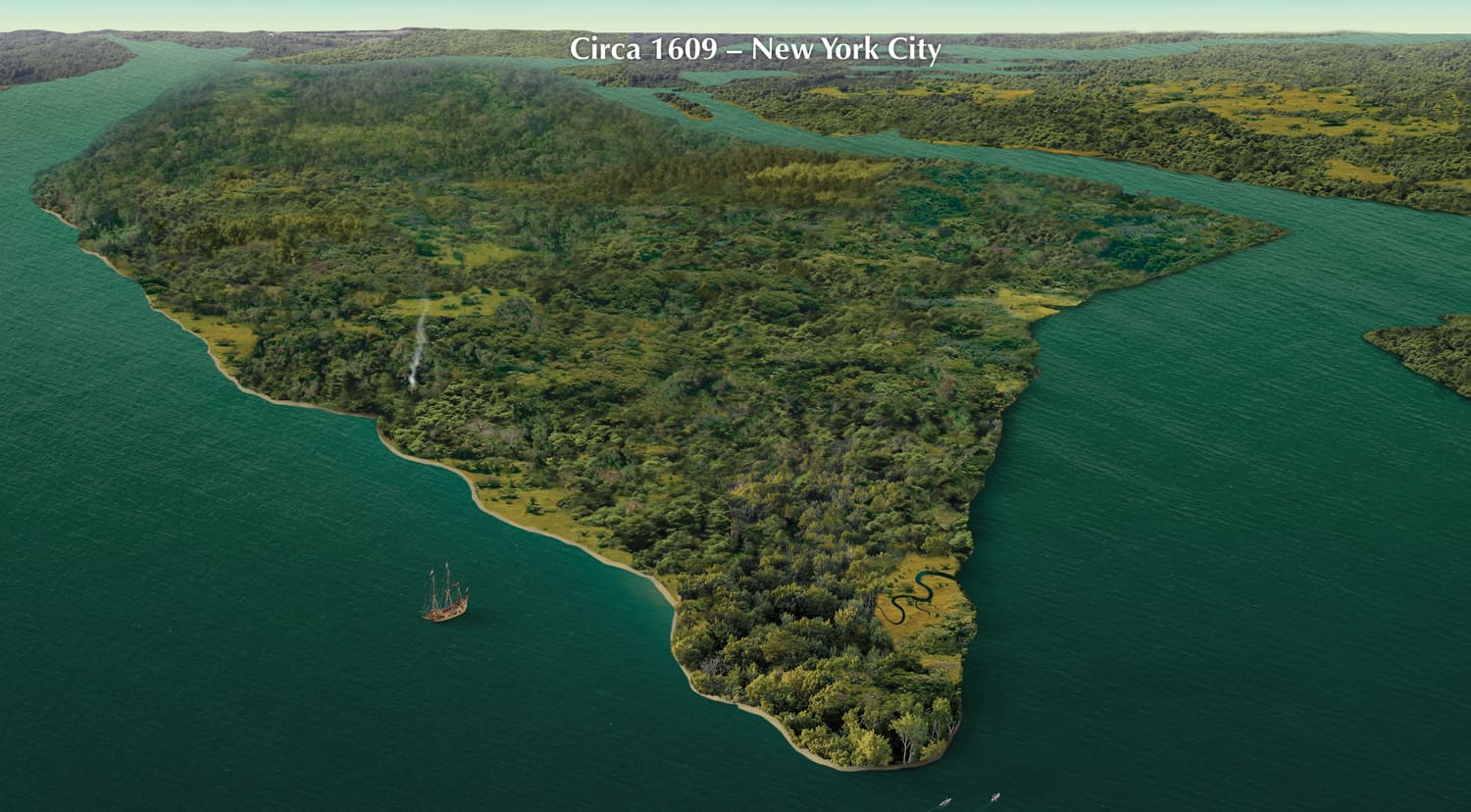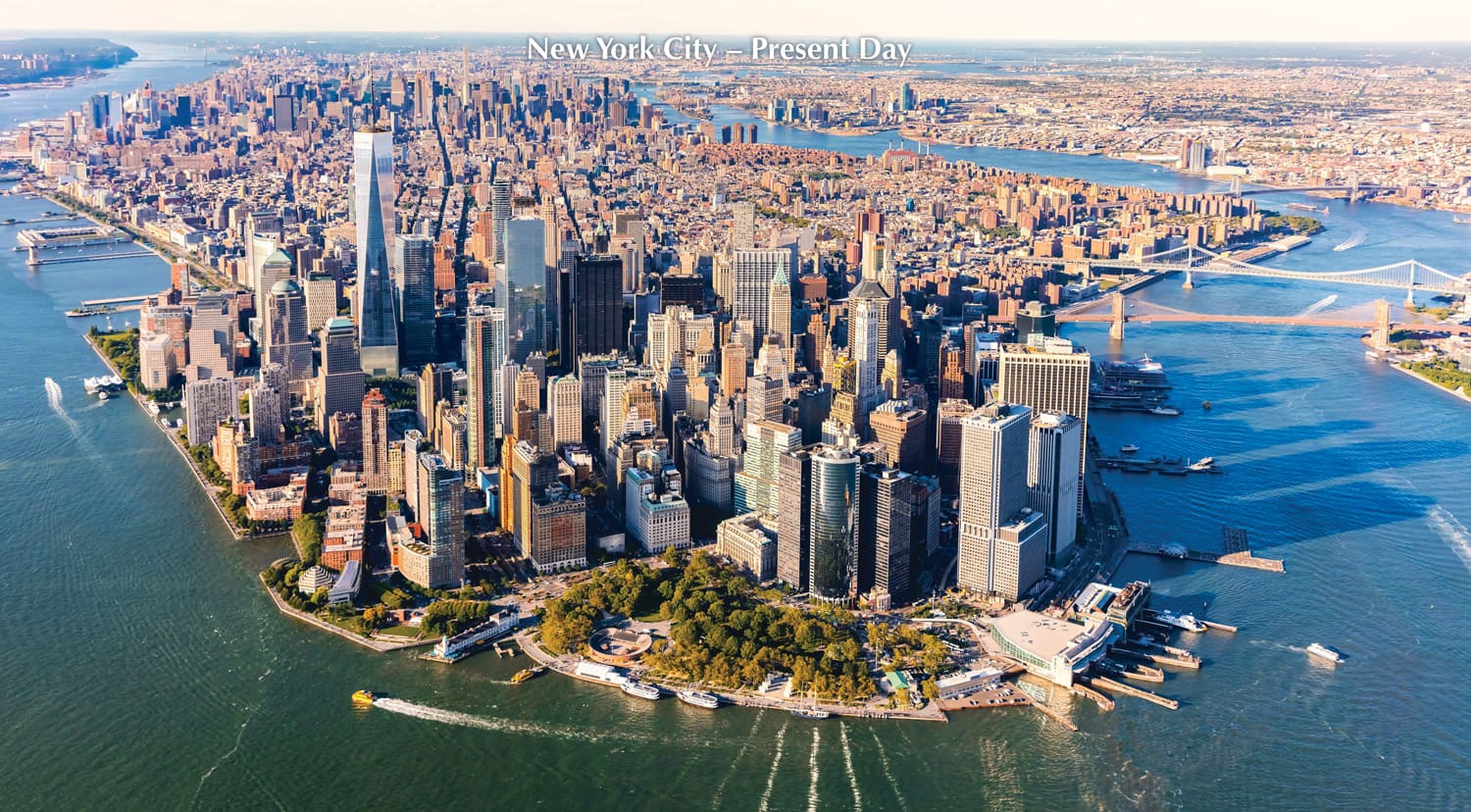
History of Broadway NYC: From Wickquasgeck Trail to Iconic Urban and Cultural Avenue in Pictures
Broadway, the oldest north-south main thoroughfare in New York City, is steeped in a rich history that dates back to its origins as the Wickquasgeck trail. This path, etched through Manhattan’s natural landscape by Native American inhabitants, wove through swamps and rocky terrain, forming the backbone of the island. Upon the arrival of the Dutch in the 17th century, the trail was expanded into a road, serving as a vital link through Manhattan from Nieuw Amsterdam, the settlement at the southern tip of the island.
The earliest recorded mention of this pathway is found in the journal of Dutch explorer David Pietersz. de Vries in 1642, who referred to it as “the Wickquasgeck Road.” The Dutch named it the Heeren Wegh or Heeren Straat, translating to “Gentlemen’s Way” or “Gentlemen’s Street,” akin to a similar street in Amsterdam, or alternatively, “High Street” or “the Highway.” The thoroughfare’s transformation into “Broadway” occurred after the British takeover of the city, a name inspired by its notable width.
In a 1776 map of New York City, the street was labeled as “Broadway Street,” highlighting its evolution from a Native American trail to a colonial roadway. Today, Broadway extends 13 miles through Manhattan and continues into the Bronx, symbolizing the city’s development and modernization over centuries.
Broadway is synonymous not just with its historical significance but also with the world-renowned Broadway Theater District, the heart of American theater and a global cultural phenomenon. The street has witnessed the birth and growth of countless theatrical productions, contributing to New York City’s reputation as an entertainment capital.
Broadway’s journey from a Native American trail to a bustling, modern avenue encapsulates the essence of New York City: a blend of history, culture, and constant reinvention. The thoroughfare continues to be a vibrant artery of the city, a testament to its enduring legacy and its pivotal role in shaping the urban and cultural landscape of Manhattan.
Broadway (1642) – Timeline of New York City’s History, USA

1831: Broadway and Bowery
Engraved illustration depicting the corner of Broadway & the Bowery in downtown Manhattan.

1836: Broadway: New York City's Transformation from Colonial to Urban Wonder
Explore NYC's 1836 transformation on Broadway, from a colonial base to a bustling urban center, symbolizing its modern evolution

1855: Broadway and Broome Street
The East side of Broadway and Broome Street looking North, capturing the hum and activity of downtown Manhattan during a cold winter.

1855: Broadway and Vesey Street Looking South
Watercolor Illustration of Broadway and Vesey Street Looking South.
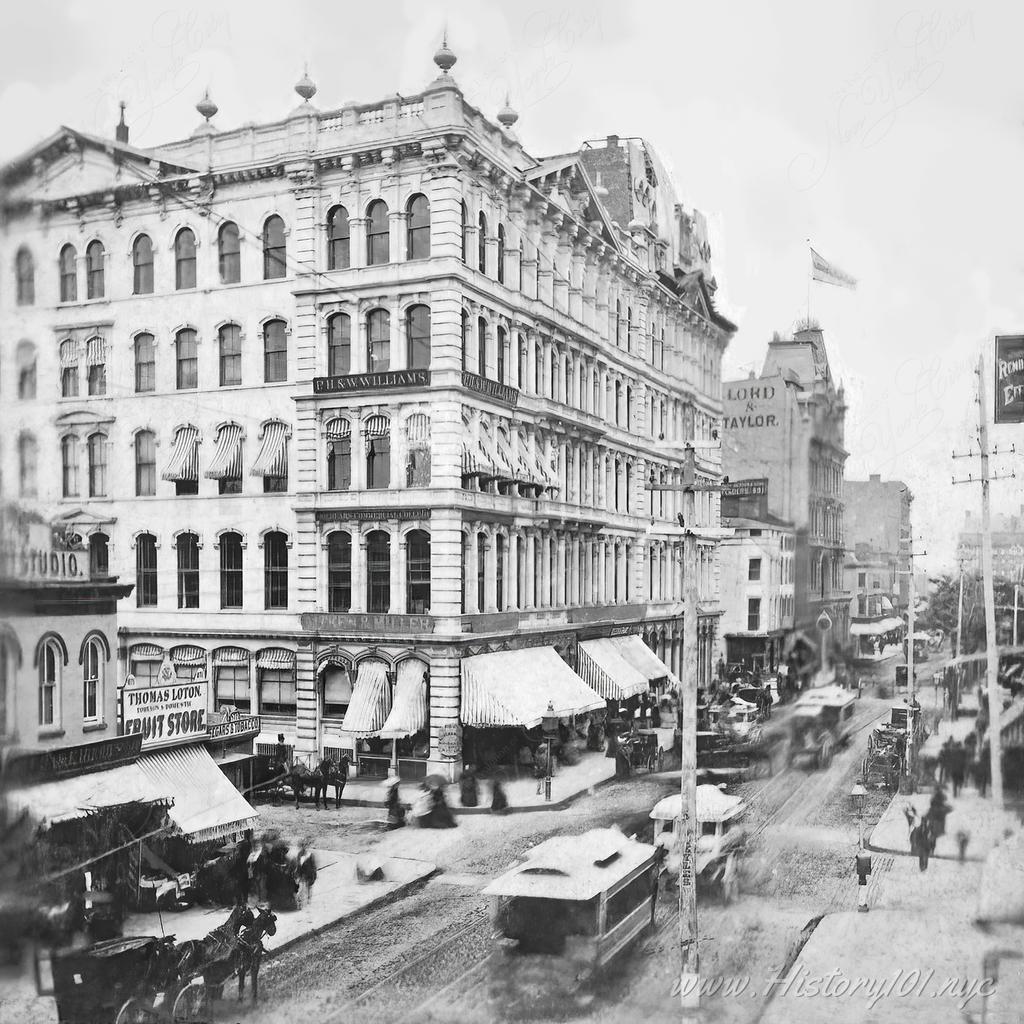
1860: Instantaneous Broadway View
A slightly elevated perspective of a bustling street known as Broadway, which remains a hub of commerce and culture to this day.

1860: Parade on Broadway near Union Square
An aerial photograph shows a large crowd of spectators enjoying a parade on Broadway.
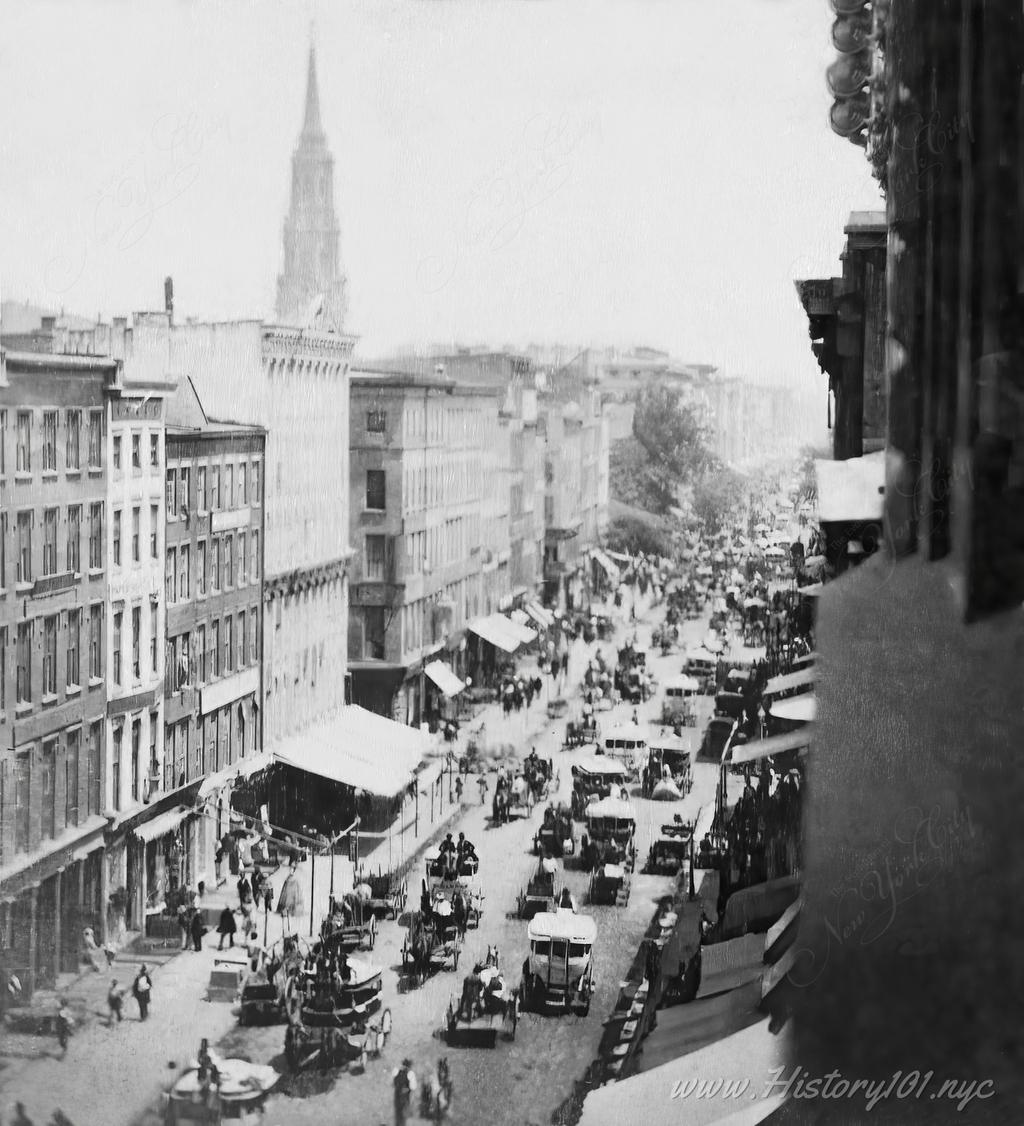
1865: Exploring New York: George Stacy's Iconic Broadway View
Discover 1865 NYC through Stacy's Broadway photo, capturing the city's vibrant streets and commercial evolution
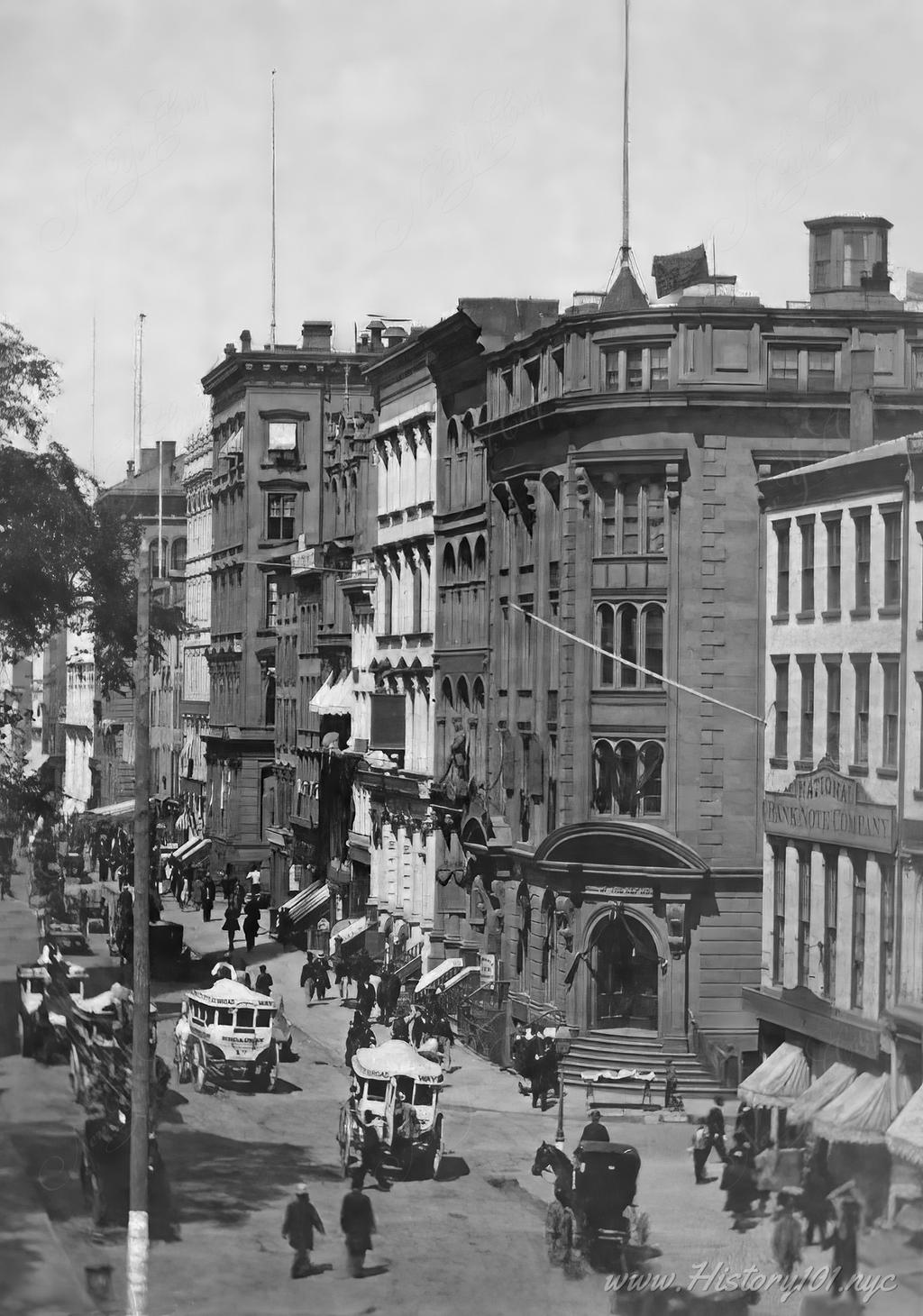
1865: Broadway and the Bank of the Republic, NYC
Photograph taken in 1865 shows the "National Bank of the Republic" (NBR) surrounded by other commercial buildings, pedestrians and traffic on Broadway.

1865: 23rd Street and Broadway - Madison Square Park
Photograph of the Fifth Avenue Hotel, across from Madison Square Park, New York City.

1868: Northern View of Union Square and Broadway
A photograph shows a famous intersection of downtown Manhattan, lined with trolleys and a vastly different urban landscape.

1868: Light Traffic at Union Square and Broadway
Aerial view of Union Square on an overcast morning. The streets are sparsly dotted with pedestrians and street cars.
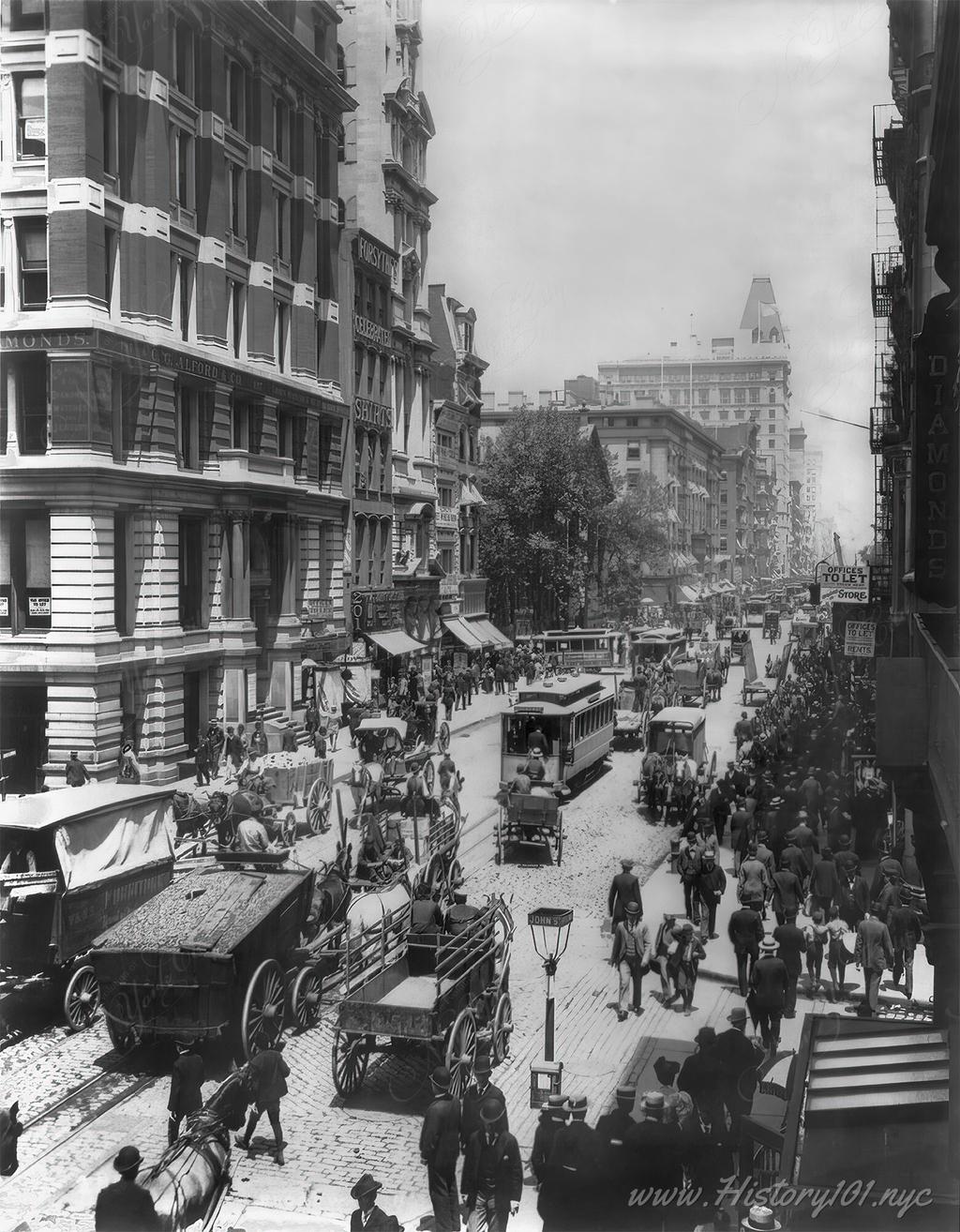
1895: Broadway and John Street
Photograph of Broadway near John Street filled with carriages and pedestrians.

1900: Bowling Green and Lower Broadway
A colorized photochrom print depicting an aerial view of Bowling Green and its surrounding buildings.

1900: Subway Expansion at Columbia University: A Historic NYC Urban Milestone
Explore the historic snapshot of NYC's IRT subway beginnings at Broadway and 116th, marking a monumental shift in urban connectivity and landscape near Columbia University

1903: Broadway and Times Building
One Times Square was completed in 1904 to serve as the headquarters of The New York Times, which officially moved into the building in January 1905

1952: Houston Street from Broadway
Photograph shows busy intersection at Houston Street looking east from Broadway. An elevated train track visible in the background.
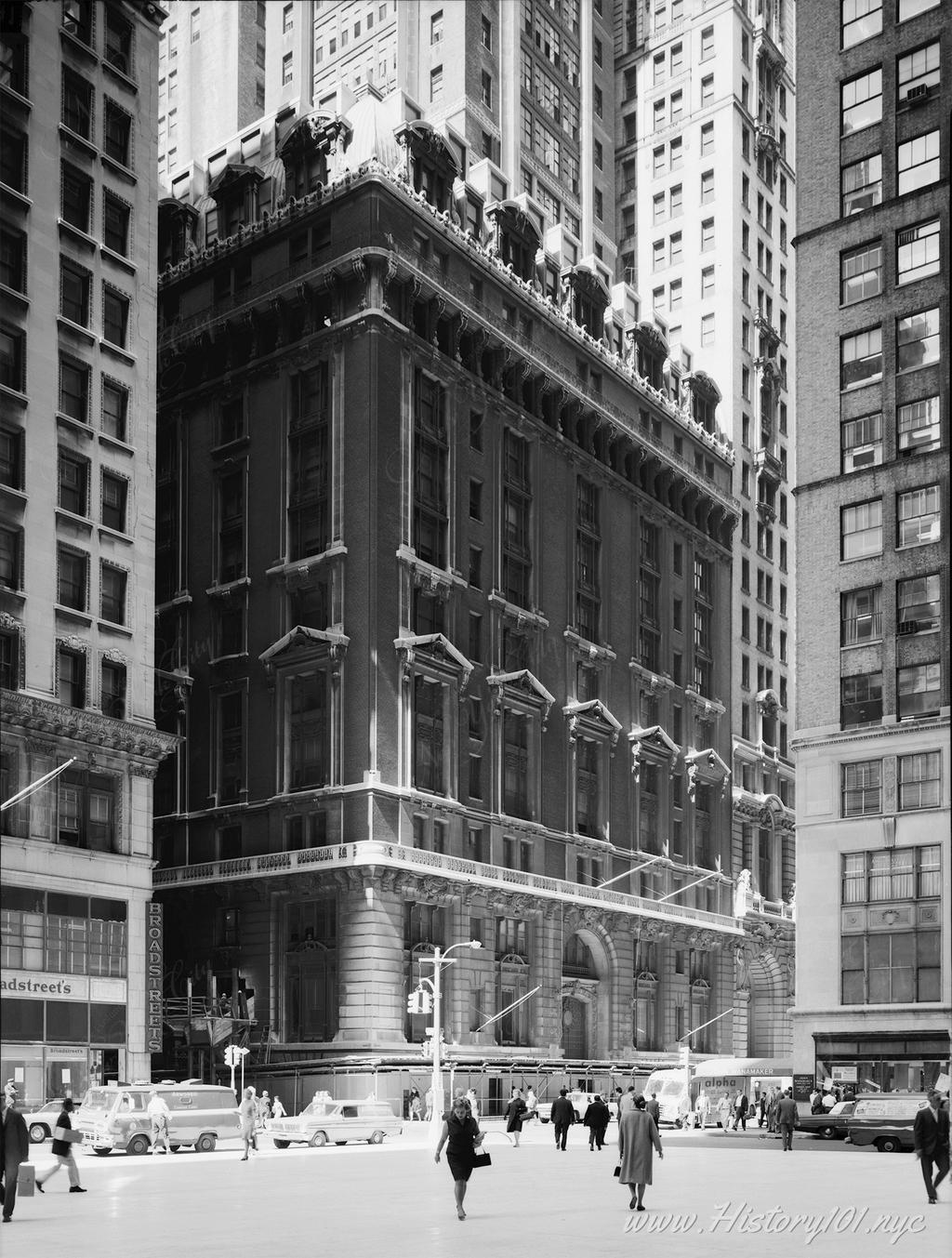
1967: Broadway and the Singer Tower
Photograph of 149 Broadway, The Singer Building Facade from the southeast.
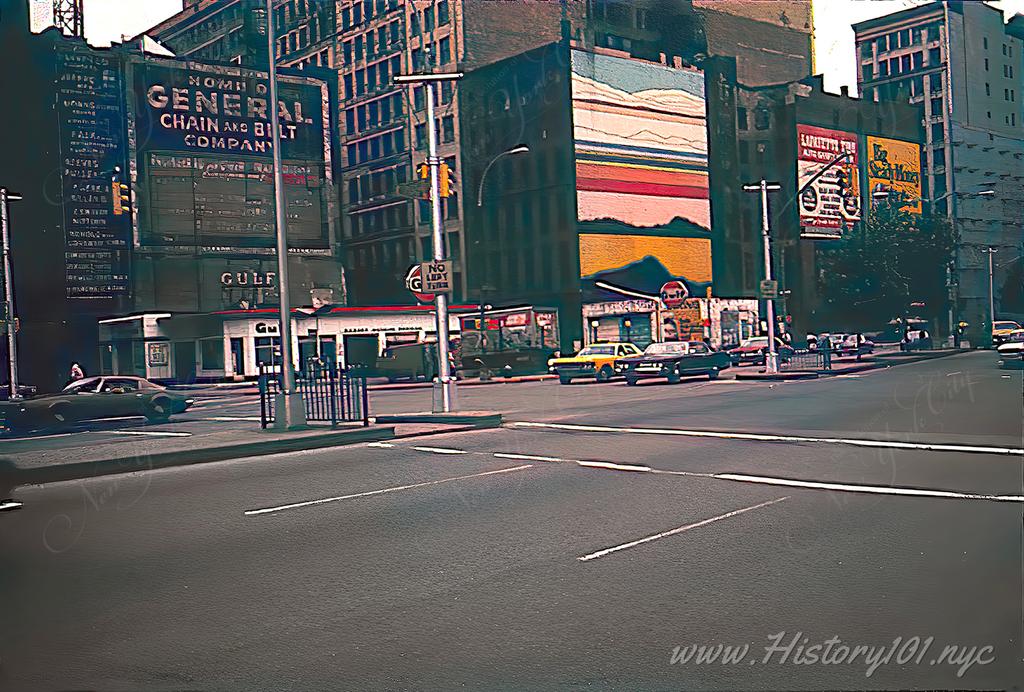
1974: Houston Street & Lafayette: Vibrant Wall Paintings & Building Advertisements
Explore the vibrant wall paintings of Houston Street, NYC in 1974, a symbol of the era's style and a cornerstone for films, rich artistic heritage
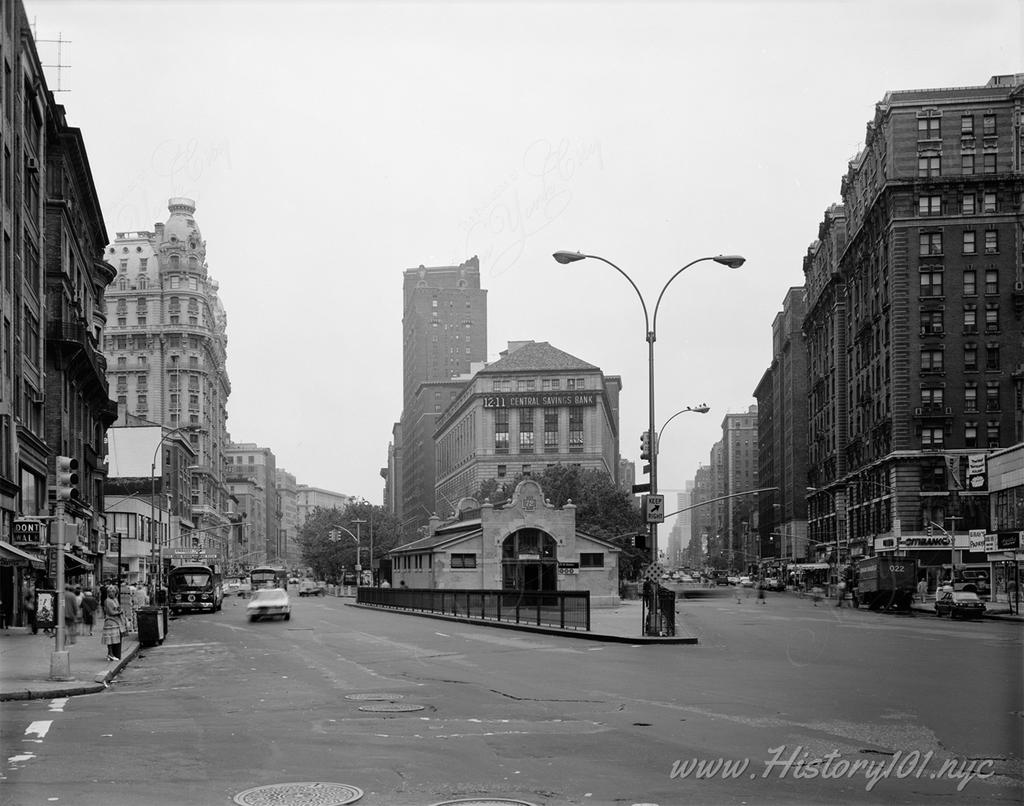
1986: 71st Street and Broadway Subway Station: A Key Stop on NYC’s Original IRT Line
Explore the history of the 71st Street and Broadway Subway Station, part of NYC's original Interborough Rapid Transit line opened in 1904
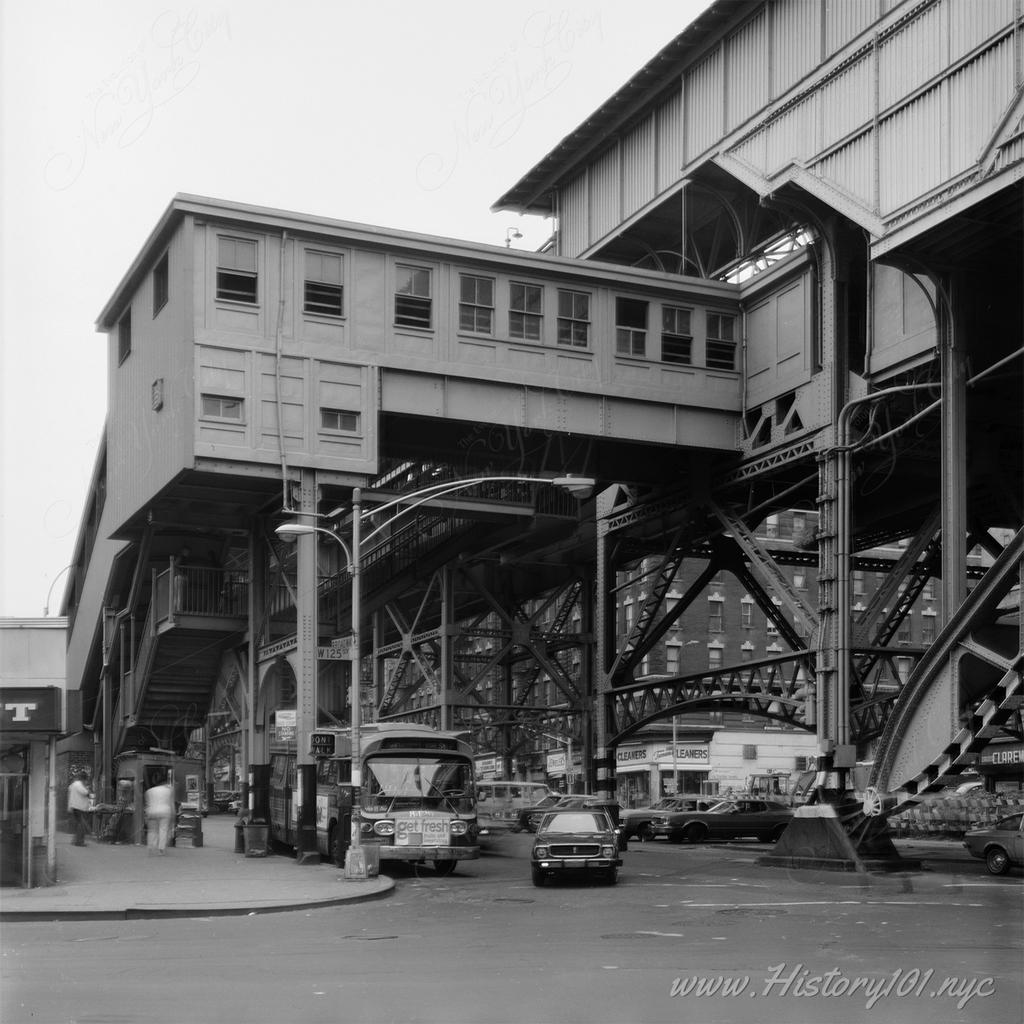
1986: Manhattan Valley Viaduct Station: Historic Harlem Subway Hub with Modern Accessibility
Explore the Manhattan Valley Viaduct station in Harlem, blending historic architecture with modern accessibility, captured alongside a vintage Twin Donut sign


